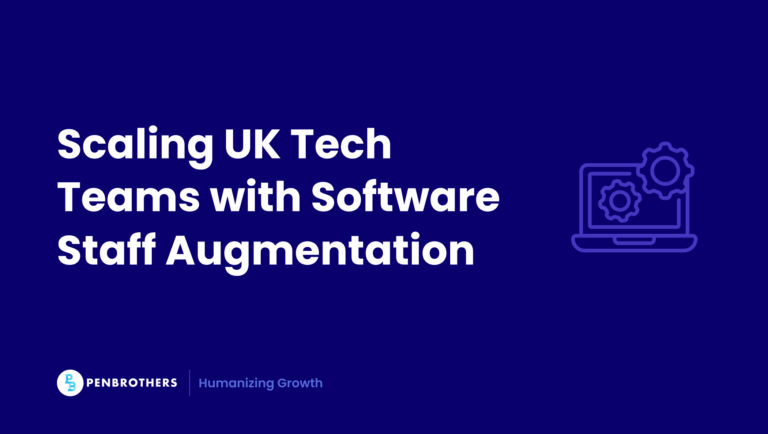When companies scale past 50 employees, the CEO-does-everything model breaks. You can’t interview every candidate. You can’t personally sell every hire on your vision. And you definitely can’t build systematic hiring processes while also running the business.
That’s when smart companies bring in a talent acquisition manager (TAM), a role charged with building and executing a long‑term hiring plan.
A talent acquisition manager isn’t just a senior recruiter with a fancier title. The difference is strategic scope.
Recruiters fill roles. They post jobs, screen resumes, schedule interviews. Important work, but tactical.
A talent acquisition manager thinks in systems. They ask different questions: What will our engineering team need in eighteen months? Which universities produce the developers who thrive here? How do we build a hiring process that scales without losing quality?
I’ve watched this distinction play out many times. Companies hire recruiters when they need bodies. They hire talent acquisition managers when they need to build something that lasts.
What Exceptional Talent Acquisition Managers Actually Do?
The best talent acquisition managers I’ve worked with share a few traits. They think like entrepreneurs, so they understand that hiring is a revenue function, not a cost center. And they build processes that compound over time.
Here’s what that looks like in practice:
They start with workforce planning. They sit with department heads and map out growth scenarios. If we land that enterprise deal, how many engineers do we need? If we expand to Asia, what does our support team look like? They turn vague growth plans into specific hiring roadmaps.
They own the entire candidate journey. From the moment someone sees your job posting to their first day on the job, a good TAM ensures every touchpoint reflects your company’s values and ambitions. They know that candidates talk. One bad interview experience can poison your reputation in a tight labor market.
They build your employer brand with intention. This goes beyond posting team photos on LinkedIn. They craft narratives about why your company matters. They identify what makes you different and ensure that that message reaches the right people, and when a top performer is considering five offers, your employer brand often tips the scales.
They create feedback loops with hiring managers. No more black-box recruiting where engineering complains about candidate quality while HR complains about impossible requirements. TAMs facilitate honest conversations about trade-offs, timelines, and priorities.
They measure what matters. Time-to-hire matters, but it’s a bit of a vanity metric; quality-of-hire is a better metric of success. Good TAMs track which sourcing channels produce employees who stay and succeed. They know the real cost of a bad hire and build processes to minimize that risk.
Why Growing Teams Need a Talent Acquisition Manager
Let’s talk about what happens when companies scale without proper talent infrastructure. It’s predictable. And painful.
Scalability and Long-Term Thinking
Here’s what I see constantly: A company lands a big client or closes funding. Suddenly, they need twenty developers yesterday. So they scramble. Post jobs everywhere. Rush interviews. Make offers to anyone who seems remotely qualified.
You know how this ends. Bad cultural fits. Compliance nightmares. Teams that never gel. All because no one was thinking six months ahead.
A TAM changes this dynamic entirely. They’re not reacting to today’s crisis—they’re building for next year’s growth. They map your business trajectory against talent needs, build pipelines before you need them, and create hiring systems that scale with your ambitions. The difference between reactive and strategic hiring is the difference between barely surviving and actually thriving.
Improved Quality of Hire
Most companies fish in the same shallow talent pools. They post on Indeed, wait for applications, and wonder why they can’t find exceptional people. TAMs think differently.
They build multi-channel sourcing strategies: tapping professional networks, university partnerships, employee referrals, niche communities where your ideal candidates actually spend time. But sourcing is just the start. The real value comes from systematic assessment. Structured interviews that actually predict performance. Skills evaluations that go beyond resume keywords. Cultural fit assessments based on data, not gut feel.
Studies back this up. Companies using structured, skills-based hiring see dramatically fewer bad hires and significantly higher performance. The thing is, this only works when someone owns it completely. That’s what a TAM does.
Stronger Employer Brand and Candidate Experience
Nearly half of candidates abandon applications because of poor communication or complicated processes. Think about that. You’re literally pushing away people who want to work for you.
Your employer brand isn’t just your careers page; it’s every interaction a candidate has with your company. TAMs understand this. They audit your entire candidate journey, craft messaging that resonates with the people you want, and ensure every touchpoint reinforces why your company matters.
And when a senior engineer weighs five offers, your employer brand often tips the scale.
Compliance and Risk Reduction
Nobody likes talking about compliance until something goes wrong. Then it’s all anyone talks about.
One discrimination lawsuit can cost millions. One wage violation triggers audits that distract your team for months. One bad hire in a regulated role creates liabilities you don’t even know exist.
TAMs prevent these disasters through systematic risk management. They ensure job postings comply with regulations, document decisions properly, and track metrics that flag potential issues early. They know which questions you can’t ask in interviews and which background checks are required for different roles.
Here’s what’s interesting, though: Good compliance actually improves hiring outcomes. When you remove bias from your process, you tap talent pools others miss. When you track the right metrics, you spot problems before they explode.
Data-Driven Decision Making
Most hiring runs on hope and intuition. “This recruiter seems good.” “I think we’re improving.” “That university partnership feels worthwhile.”
TAMs replace feelings with facts. They know which sourcing channels produce employees who stay. They track time-to-productivity by role. They measure quality-of-hire through actual performance data.
This becomes your competitive advantage. When the board asks why you’re investing in certain tools, you show ROI through reduced time-to-hire. When finance questions recruiting spend, you demonstrate cost-per-hire trends and quality improvements. Every hire teaches you something, but only if someone’s measuring, learning, and adjusting the system.
The best TAMs I know are constantly experimenting. Testing new channels. Refining interview processes. Building better assessments. They treat hiring like product development, because that’s essentially what it is, especially for a company like Penbrothers.
The Economics Make Sense (Especially Offshore)
I know what you’re thinking: “This sounds expensive.”
In the US, a talent acquisition manager commands serious compensation. Recent data puts the average at $133,000 annually, with senior folks pushing past $165,000. Add benefits, and you’re looking at $180,000+ in total cost.
But here’s where it gets interesting.
In the Philippines, an equally skilled TAM earns between $25,000 and $35,000.
Nope, that’s not a typo. We’re talking about professionals with deep expertise, perfect English, and often better technical skills than their US counterparts.
This isn’t about exploiting wage differences. It’s about accessing global talent intelligently. Filipino HR professionals often have experience with US companies, understand Western business culture, and work in a time zone that overlaps with US mornings.
You can hire three exceptional Filipino TAMs for the cost of one mid-level US hire. Or you can hire one senior Filipino TAM and invest the savings in better hiring tools, employer branding, or just keeping more runway.
Why Offshore TAMs Succeed
We’ve placed dozens of Filipino talent acquisition managers with US, UK, Australian, Singaporean, and other English-speaking companies. The successful ones share certain characteristics that go beyond cost savings.
They understand cultural nuances without being bound by them. They can navigate US hiring expectations while bringing fresh perspectives from Asian talent markets. They’re often intensely systematic, having learned to work across distances and time zones from day one.
They’re also hungry in a way that’s increasingly rare in US tech hubs. While a US TAM might see your Series A startup as a stepping stone, a Filipino TAM often views it as a career-defining opportunity. That commitment shows in their work.
But here’s the critical part: offshore talent only works with the right support system.
Too many companies hire offshore, throw them into Slack, and wonder why it fails. Remote work requires intention. Offshore remote work requires even more. You need structured onboarding, clear communication protocols, and someone who owns the relationship.
That’s where our Hypercare Framework comes in. We don’t just find talent. We ensure they succeed.
When to Pull the Trigger
So when should you hire a talent acquisition manager? The signals are usually obvious once you know what to look for.
Your hiring has become reactive. You only post jobs when someone quits. You only interview when you’re desperate. There’s no pipeline, no planning, no strategy.
Your good people keep leaving. High turnover usually signals broken hiring or broken onboarding. Often both. A TAM can diagnose the real issues and fix the system, not just the symptoms.
Your time-to-hire is killing momentum. When it takes three months to fill a role, projects stall and teams burn out. A TAM compresses hiring cycles without compromising quality.
You’re expanding internationally. Cross-border hiring involves complexities most founders underestimate. Compliance, cultural fit, compensation benchmarking—a TAM who knows these markets saves you from expensive mistakes.
What This Means for You
Building a great company requires great people. Finding great people requires great systems. And great systems require someone who owns them completely.
A talent acquisition manager isn’t overhead. They’re leverage. They multiply your ability to find, attract, and retain the people who will build your future.
If you’re ready to build a hiring system that scales, let’s talk. We know exactly where to find the talent acquisition manager who can transform how you build your team.
Because in the end, companies don’t win because of their ideas. They win because of their people. And finding those people? That’s a job worth doing right.






